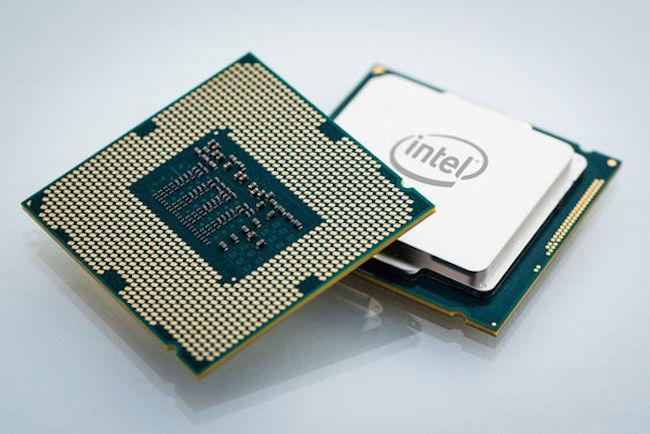
Fool me once
Before talking about Devil’s Canyon, though, let’s first remember what led up to it. The release of Haswell last year was expected to provide a modest, but noticeable bump in performance over the previous generation.
Once reviewers laid their hands on Haswell chips, however, it became clear that something had gone wrong. The new 4th-gen desktop processors were only 10 percent quicker than their predecessors, at most, and they were priced slightly higher than their 3rd-gen equivalents, which meant their value was questionable.

Worse, the 4th-gen chips switched to a less effective thermal material, which made them less suitable for overclocking. Reviewers noted that the new processors often peaked at a lower overclock speed than those that came before. The Tech Report, for example, managed to achieve 4.9 GHz with an Ivy Bridge chip, but only hit 4.7 GHz with the Core i7-4770K. Tom’s Hardware, meanwhile, only hit 4.6 GHz with a single 4770K; most maxed out at 4.4 GHz.
This development is only the latest in a long line of decisions that has put Intel at odds with die-hard PC fans. In 2010, the company eliminated the ability to overclock most chips by tying the speed of every chipset bus to a sole internal clock. Intel then poured salt on the wound by introducing expensive “K-series” processors that do have an unlocked multiplier, but also cost more than their locked siblings.
Fool me twice
Intel’s execution of its anti-overclocking campaign was made with few excuses. Enthusiasts often felt ignored, but they also had little choice but to stick with Intel. AMD’s latest processors simply aren’t quick enough to compete.
So it’s no wonder the community perked up when Intel’s VP of the PC Client Group, Lisa Graff, began hyping the new Devil’s Canyon hardware. Marketed from the beginning as an answer to enthusiasts who felt ignored, the unlocked chips promised maximum speeds of up to 5 GHz on air cooling, a truly outstanding figure. Enthusiasts went starry-eyed and light-headed as they dreamed of what might be possible. Overclocking quotes from manufacturers are usually conservative, after all; if Intel says 5 GHz, then what’s really possible?

Less than 5GHz, as it turns out. Numerous reviewers have found that the new Devil’s Canyon chips are barely better than the Core i7-4770K. HardOCP, PC Perspective and The Tech Report all maxed it out to 4.7 GHz, and even that figure did not come easily. The Tech Report even noticed the new Devil’s Canyon 4790K CPU required more voltage than the 4770K to achieve the same clock speed. A few extreme overclockers have managed better results (the record is 7 GHz), but only by disabling two cores and using liquid nitrogen for cooling. That, of course, isn’t practical for 99.9999999 percent of owners.
Even the new unlocked Pentium processor should be viewed with skepticism. Yes, it’s a $75 processor that some reviewers have overclocked as high as 4.5 GHz, but it’s also a dual-core without hyperthreading, and you’ll want a Z87 or Z97 motherboard to make the most of its potential. In short, you’ll be spending $175 to $200 on a processor and motherboard combination that stumbles whenever it’s asked to handle a workload with more than two threads – and many demanding applications, including the latest games, will ask for more than that.

In short, the roles in which a very fast dual core CPU can be useful are limited. Intel no doubt knows that. So why sell it? Call me crazy, but I think the company is cashing in on nostalgia for the late-90s era of overclocking in which some Intel processors, Celerons in particular, could be purchased at low prices and then heavily overclocked with relative ease. This isn’t the 90s anymore, though. Threaded performance matters, and it makes the Pentium a conversation starter instead of a processor enthusiasts are likely to run in their main rig.
Shame on you
Intel’s neglect of the enthusiast market is disappointing, to say the least. At times, the company seems to go out of its way to make things more difficult for its biggest fans.
The real problem is Intel’s success. All of the company’s competitors have been run out of the enthusiast market. Even AMD is now relegated to the sidelines, nibbling at the edges in hopes of finding a treat here or there. Yes, AMD’s unlocked chips are easier to overclock, but who cares? Even the best FX-series chips barely keep up with mid-range Intel hardware.
In short, there’s no incentive for Intel to do better – but that’s a hollow excuse. Like Microsoft, Intel needs to worry about dwindling enthusiasm for computing, and giving the most hardcore PC owners the cold shoulder only speeds the decline.
Image Credit: Wikimedia/Dsimic, Flickr/Mike Deal


